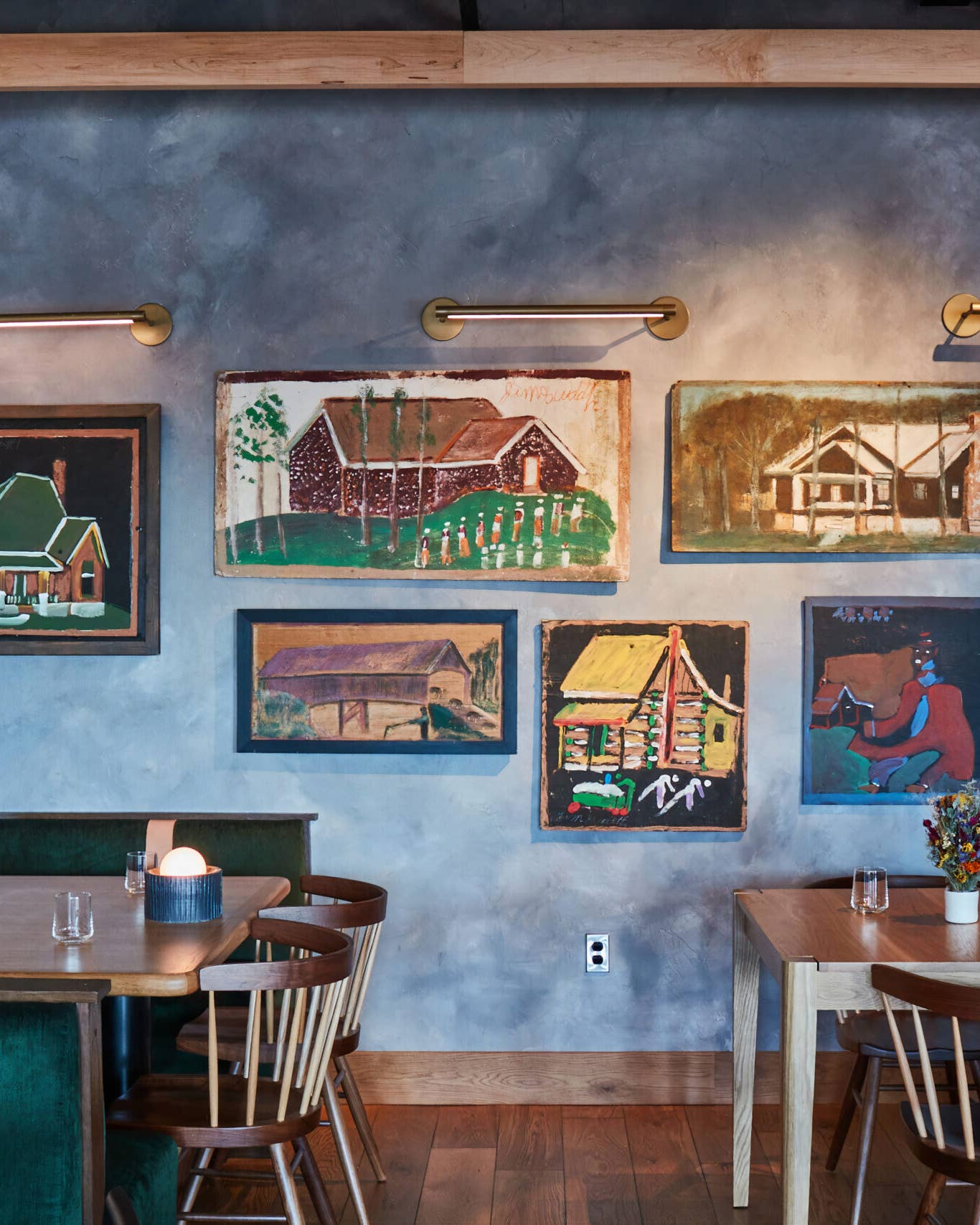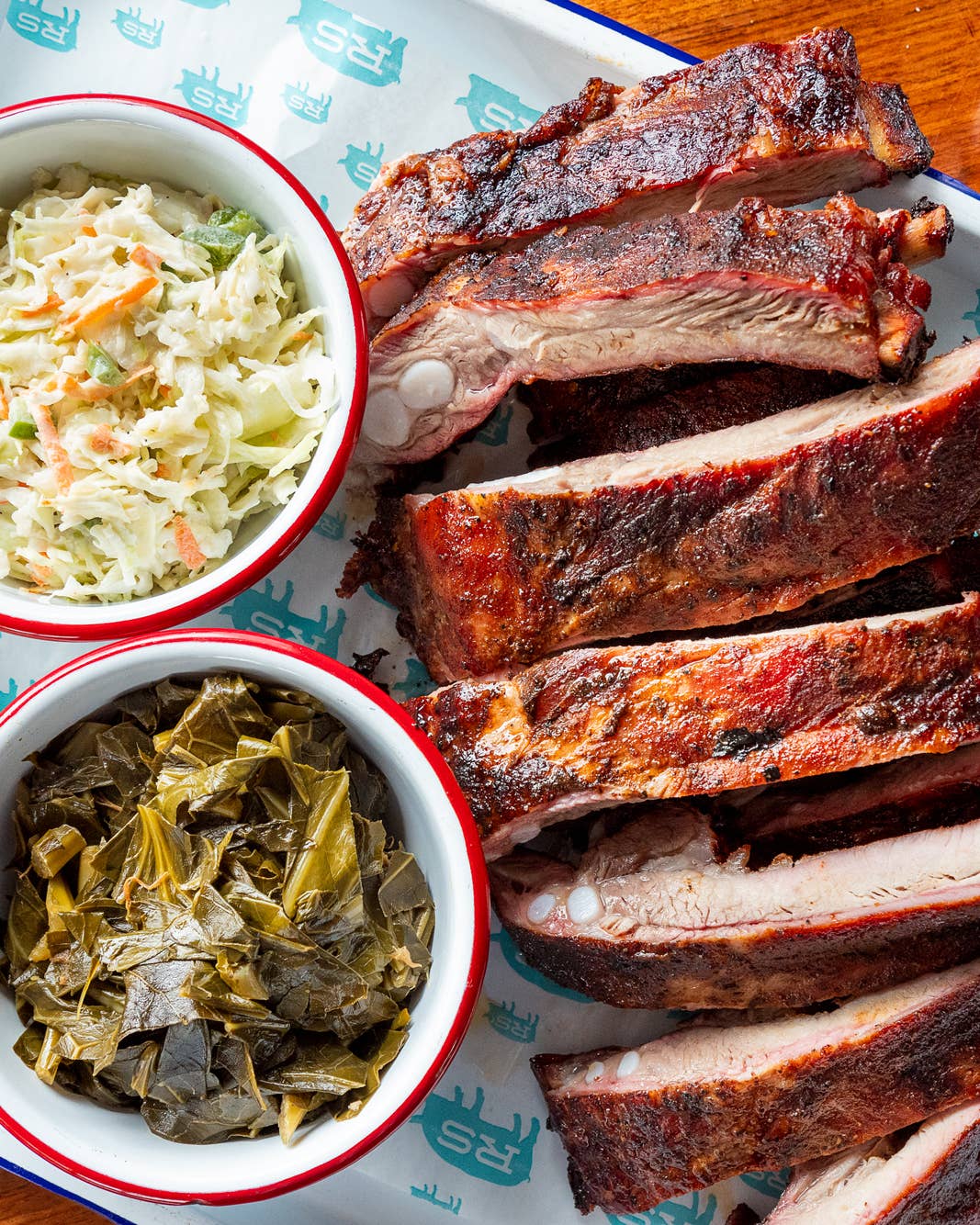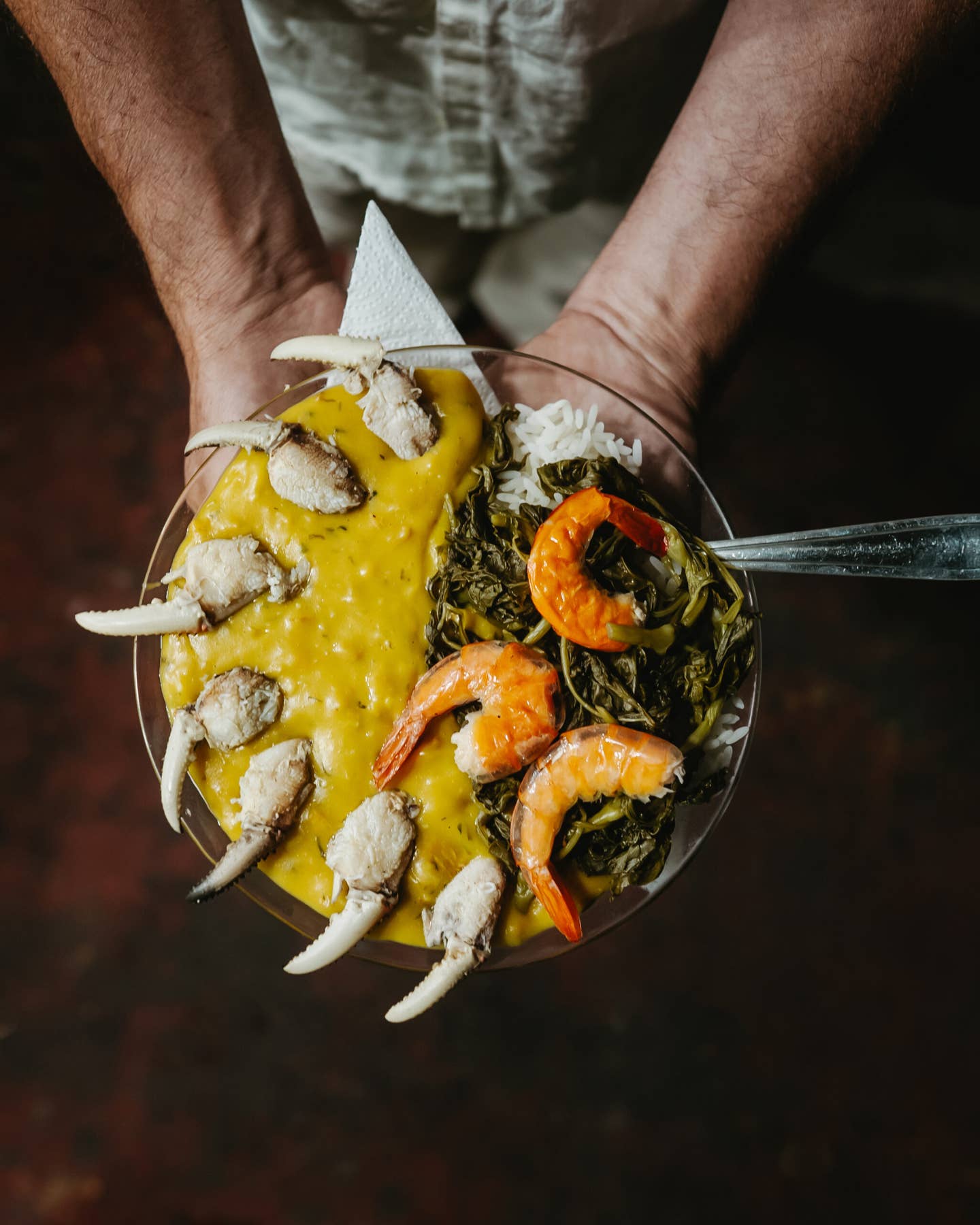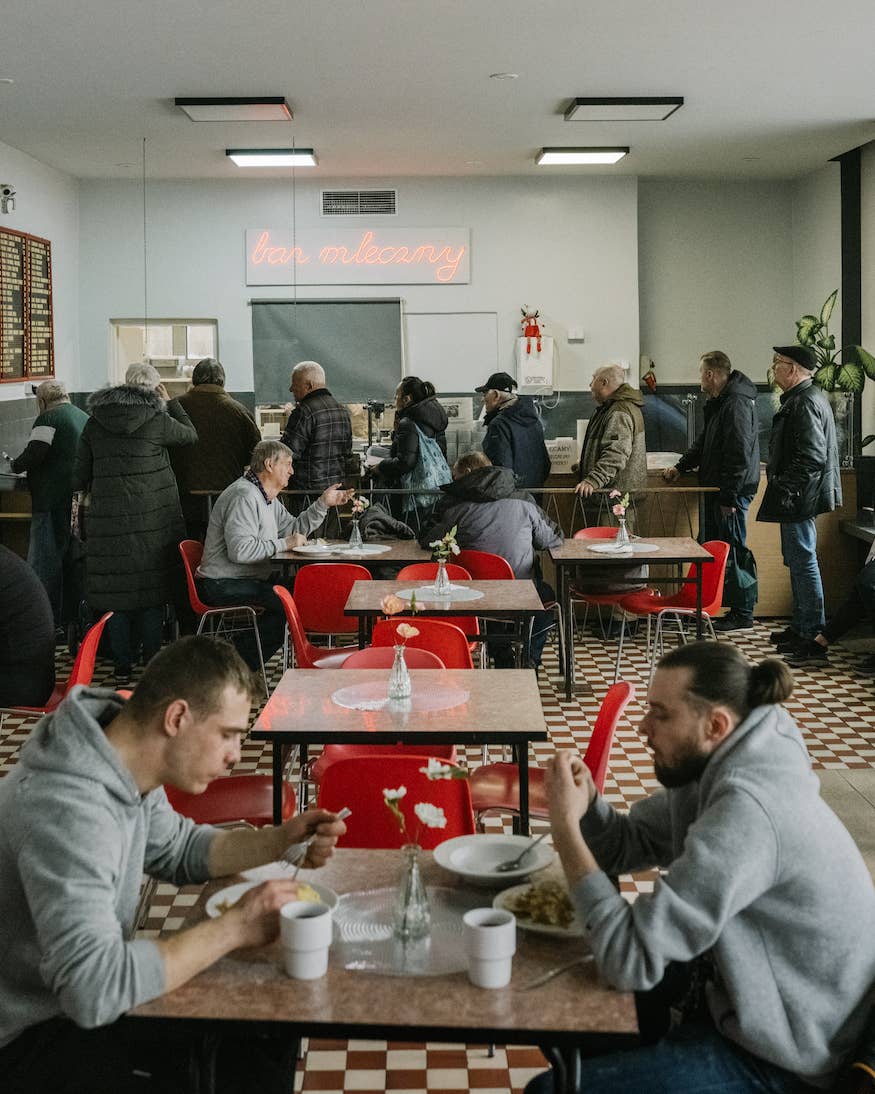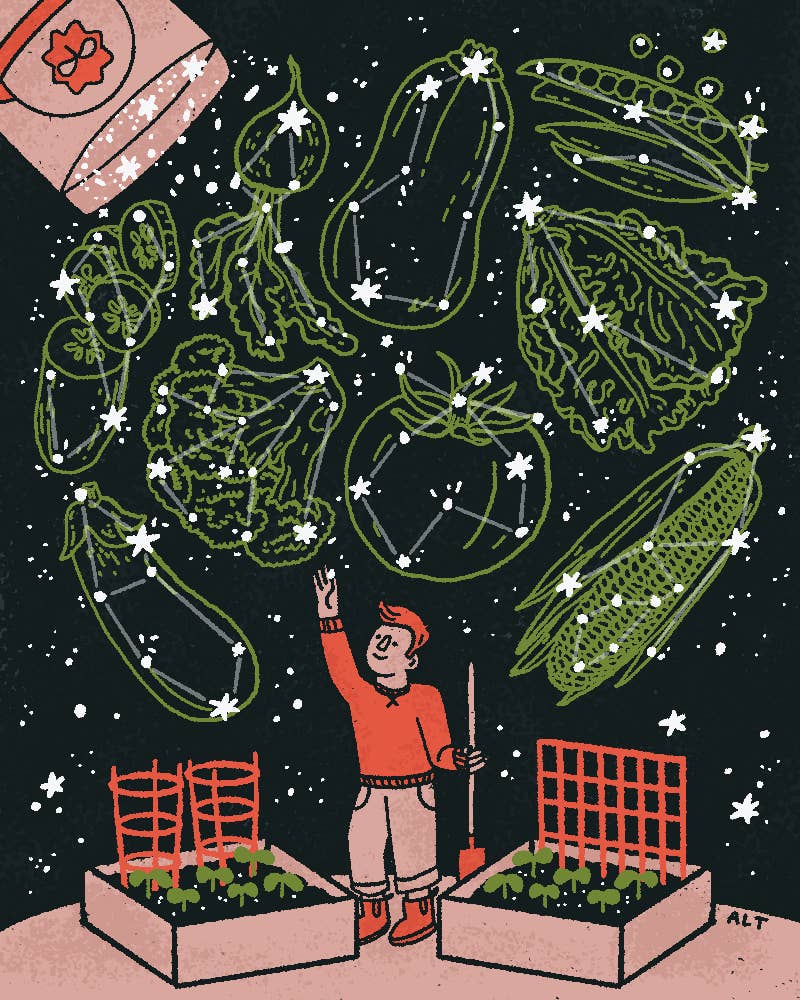
Meet the Makers Preserving the Past in Nara
From hand-rolled tea to preserved persimmons, artisans in this ancient Japanese city are bringing their generations-old crafts into the future.
I can smell the narazuke fermentation room before I see it. The malty scent of vegetables mingling with bacteria is a signpost pointing toward the facility where Soshin Nishida and his family age pickled white melon. I inhale deeply, taking in the aromas, and Nishida beams. “It smells good, doesn’t it?”
Tourists flock to Nara to pose for selfies with the Japanese city’s famous free-roaming deer, but the historic prefecture is otherwise largely overlooked as a destination, eclipsed by Kyoto’s famed temples and Osaka’s glitz. Yet in the 8th century, Nara was Japan’s first permanent capital, among the easternmost stops on the ancient Silk Road, and a key entry point for edible imports. From tea drinking to persimmon cultivation, the city became a fountainhead of Japanese food culture.
Today, many of Japan’s culinary crafts are fading, replaced by machine-made shortcuts or abandoned entirely. Yet in Nara, where many of these skills have their earliest roots in the country, a handful of artisans are devoted to preserving these ancient techniques—and reimagining them for the future.
The Pickle Maker: Soshin Nishida
Brewing sake leaves behind a precious byproduct: sake lees, a white, paste-like residue with a mildly sweet and fruity taste. Not to be wasted, the ingredient is a base for countless foods in Japanese cuisine: amazake (a sweet fermented rice drink), marinades, and pickles, including a centuries-old Nara specialty, narazuke.
Soshin Nishida, who is part of the 11th generation in his family to produce the pickled white melon, often spends much of the day with his hands deep in tubs of narazuke. (He jokes that the peptide-rich sake lees, used as a cosmetic ingredient in Japan, is his secret to youthful-looking hands.) He shows me around his family-owned brand Ashibiyahonpo’s aging facility, explaining how they use sake lees and salt to season and preserve the melon, which turns savory as it ferments for at least three years, or up to five. The crunchy pickles are tangy and umami—an ideal accompaniment to porridge or sushi.
Before refrigeration, narazuke was a means of preservation. In 2018, to reimagine its potential, Nishida’s family opened the pizzeria Cervo Bianco, which offers a narazuke-topped four-cheese pizza and pickle-flavored gelato. “Narazuke can be more than just a pairing,” Nishida insists. “I don’t want future generations to forget its nutritional legacy.”
The Tea Cultivator: Junichi Uekubo
To roll his tea by hand, Junichi Uekubo spends up to eight hours a day hunched over a washi paper-lined table laden with leaves. A heater beneath the table helps dry the delicate greens, so he must keep them in constant motion, rapidly sliding his palms back and forth across the surface to prevent the tea from burning.
The resulting needles of temomicha, or hand-rolled tea, Uekubo says, are worth every bit of effort. Only a tiny fraction of the green tea produced in Japan is still hand-rolled, a process that breaks down the cells and releases the leaves’ fragrance and flavor. Uekubo’s tastes unlike any tea I’ve had before—savory, with undertones of dashi. “I use crab, herring, and oysters as fertilizer, to heighten that umami flavor,” he tells me.
As a child, Uekubo, a seventh-generation tea cultivator, was unsure whether he wanted to take over the family business, Tea Uekubo. But one whiff of its prized temomicha convinced him: “I’m the first one who gets to taste it,” he says. “That’s the best moment. I want to share those special emotions that tea can arouse.”
The Soybean Grower and The Miso Maker: Masahiro Kondo and Hiroyuki Katagami
Soybeans play a critical role in Japanese cuisine—in soy sauce, tofu, miso, and beyond—but more than 90 percent of them used in Japan are grown elsewhere. In recent decades, the nation’s soybean cultivation has been steadily declining, due to limited land, unfavorable weather, aging farmers, and the comparative reliability of imported North American-grown beans.
The O-deppo variety, once prominent in Nara, is now nearly extinct. When tofu maker and Nara native Masahiro Kondo heard that the breed once grew taller than the average soybean plant, with double the yield and a greater depth of flavor from its unusually high sucrose content, he decided to hunt down the heirloom seeds and revive the crop.
At first, Hiroyuki Katagami, owner of Katagami Shoyu, was one of the few local soy sauce makers willing to take a chance on the unfamiliar bean. But the resurrected legumes stood up to their long-forgotten reputation. I sample a taste of Katagami’s miso, and it is smooth and creamy, the ingredient’s characteristic salty, funky flavor punctuated by a distinct sweetness. “Soybeans used to be a pride of Nara,” says Kondo, who also uses the beans at his company Miki Tofu. “We’re slowly bringing back the concept of farm-to-table soybeans.”
The Persimmon Preserver: Kazuhiro Ishii
In Japan, if you throw away something that could still be useful, you might hear the term “mottainai.” Loosely translating to “what a waste,” it’s often uttered as a reminder to reuse and recycle.
“We are nature worshippers,” says Kazuhiro Ishii, the quiet and cerebral third-generation owner of Ishii Co., who attributes Japanese people’s deep respect for the environment to the country’s indigenous Shinto religion. That ethos of conservation was what motivated his grandfather, Isao Ishii, to develop the family brand’s first persimmon-based product in 1981. Scuffed or otherwise imperfect persimmons couldn’t be sold (“Japanese people are perfectionists,” Kazuhiro says), but they could be transformed into treats like hoshigaki (dried Hachiya persimmons) and kyoshu no kaki (dried Horenbo persimmons filled with sweet chestnut paste). The family created other products as well: a sweet-tart vinegar made from the fruit’s syrupy flesh, and a wheaty brewed tea and matcha-like powder from the dried leaves.
Persimmons, or kaki in Japanese, have been cultivated in Nara for centuries. There’s an ancient custom of writing a love note on a persimmon leaf, then releasing it into a body of water. One of the city’s famed delicacies is kakinoha-zushi, a pressed sushi made by wrapping marinated fish in the fruit’s leaves—when I unwrap one in a local shop, I feel like I’m opening a gift.
Today, Kazuhiro continues to research new ways to make the most of persimmons, like turning the skin into natural food coloring and the juice into sweetener. “I want to continue making farmers happy by buying their damaged fruit,” he tells me, “so we can keep passing on Nara’s kaki culture.”
The Soy Sauce Brewer: Osamu Yoshikawa
Balancing on a plank atop a six-foot-tall wooden barrel, sixth-generation soy sauce producer Osamu Yoshikawa churns a thick mixture of soybeans, wheat, koji mold, and saltwater. He invites me to give it a try, and I learn just how labor-intensive this job truly is. But Yoshikawa knows it’s worthwhile. The finished condiment will be full-bodied, complex, and a tad sweet: liquid umami.
Today, less than 1 percent of the soy sauce made in Japan is produced this way, aging from six months to three years in bamboo and cedar barrels called kioke. The liquid darkens and the flavor intensifies as the brew matures; microorganisms, flourishing in the wood’s crevices, create a distinct flavor exclusive to the maker. It can take two weeks to fashion a new kioke; Yoshikawa estimates only around 3,500 of the vessels still exist, most replaced by steel vats. But built with care, the barrels can last as long as 200 years; many of the ones at Inoue Honten, his bean-to-bottle soy sauce company, have been in continuous use for decades.
“Barrel-aging soy sauce is a fast-fading art,” says Yoshikawa, flanked by his two sons and daughter-in-law who will eventually take over the business. “But the taste of making it this way is unparalleled.” His younger son, Ryo Yoshikawa, grins broadly and flexes his biceps, as if to say, “We won’t let our father down.”
Recipes
Keep Reading
Continue to Next Story


